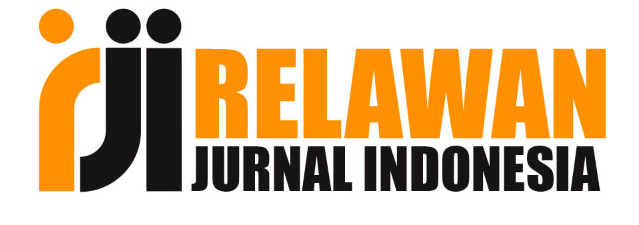Website-Based Wudu Interactive Learning Animation to Increase Students' Learning Enthusiasm
Abstract
Keywords
References
Agustin, A. D., Husnianingtyas, A., Jatnika, W. T., & Aeni, A. N. (2022). Pengembangan Media Pembelajaran Aplikasi Yuk Wudu untuk Meningkatkan Antusiasme Pembelajaran PAI Bab Wudu di SD. Fashluna: Jurnal Pendidikan Dasar Dan Keguruan, 3(1). https://doi.org/https://doi.org/10.47625/fashluna.v3i1.358
Arinal, A. A., Tulenan, V., & Jacobus, A. (2019). Pengembangan Aplikasi Tata Cara Wudhu Menggunakan Metode Markerless Augmented Reality. Jurnal Teknik Informatika, 14(2). https://doi.org/https://doi.org/10.35793/jti.14.2.2019.23991
Hompu, U. H. La, Yamin, M., & Sagala, L. O. H. S. (2016). Multimedia Pembelajaran Interaktif Makhraj Huruf Hijaiyah, Wudu dan salat Menggunakan Adobe Flash CS6 Berbasis Android. SemanTIK, 2(2). https://doi.org/http://dx.doi.org/10.55679/semantik.v2i2.1657
Inar, I., Nurfitriyani, D., V, J. M., Damayanti, F. A., & Aeni, A. N. (2023). Pemanfaatan Media Pembelajaran Aplikasi Pedutal (Petunjuk Wudu Digital) untuk Meningkatkan Pengetahuan dan Keterampilan Siswa Kelas II SD. Jurnal Pendidikan Tambusai, 7(1). https://doi.org/https://doi.org/10.31004/jptam.v7i1.5996
Muna, M. Y., & Fauziyah, I. H. (2017). Tafsir Ayat tentang Wudhu.
Nielsen Norman Group. (n.d.). Success Rate: The Simplest Usability Metric. Nngroup. https://www.nngroup.com/articles/success-rate-the-simplest-usability-metric/
Nkearns. (2017). What is H5P? Trademark of H5P Group. https://h5p.org/node/120126
Pambudi, S., & Fauzi, F. (2022). Synchronous & Asynchronous Learning dalam Perkuliahan Fikih Wudu Masa Pendemi Covid-19 di UNAIC. JIME: Jurnal Ilmiah Mandala Education, 8(1). https://doi.org/http://dx.doi.org/10.58258/jime.v8i1.2920
Rahayu, S., & Denenty, P. (2017). Pengembangan Aplikasi Wudu dan Shalat untuk Anak Menggunakan Sistem Multimedia. Jurnal Algoritma, 14(2). https://doi.org/https://doi.org/10.33364/algoritma/v.14-2.606
Santoso, A. B., & Utomo, N. F. (2020). Pengembangan Multimedia Pembelajaran Interaktif Tata Cara Berwudu untuk Mahasiswa Program Studi Agama Islam Institut Agama Islam Negeri Manado. Journal of Islamic Education: The Teacher of Civilization, 1(2). https://doi.org/http://dx.doi.org/10.30984/jpai.v1i2.1178
Setiawan, E., Syaripudin, U., & Gerhana, Y. A. (2016). Implementasi Teknologi Augmented Reality pada Buku Panduan Wudhu Berbasis Mobile Android. JOIN: Jurnal Online Informatika, 1(1). https://doi.org/https://doi.org/10.15575/join.v1i1.8
Simonsen, J., & Robertson, T. (2013). Routledge International Handbook of Participatory Design. Routledge.
Suhariyaningsih, S. (2016). Perancangan Pembelajaran Wudu dan Tayamum dengan Menerapkan Metode Computer Assisted Instruction. JURIKOM (Jurnal Riset Komputer), 3(4). https://doi.org/http://dx.doi.org/10.30865/jurikom.v3i4.335
DOI: 10.28944/maharot.v7i2.1356
Refbacks
- There are currently no refbacks.

This work is licensed under a Creative Commons Attribution-NonCommercial 4.0 International License.






